Introduction #
Ever wondered what it feels like to die a thousand delightful deaths, but this time with cardboard instead of pixels? Welcome to Dead Cells: The Rogue-Lite Board Game, where every failure is just another step towards mastery, and each run is a tantalizing dance between strategy and chaos. As a solo board gamer who lives for those moments of pure, unadulterated gameplay bliss, I’ve discovered that this tabletop adaptation isn’t just a game–it’s an experience that captures the heart and soul of its digital predecessor.
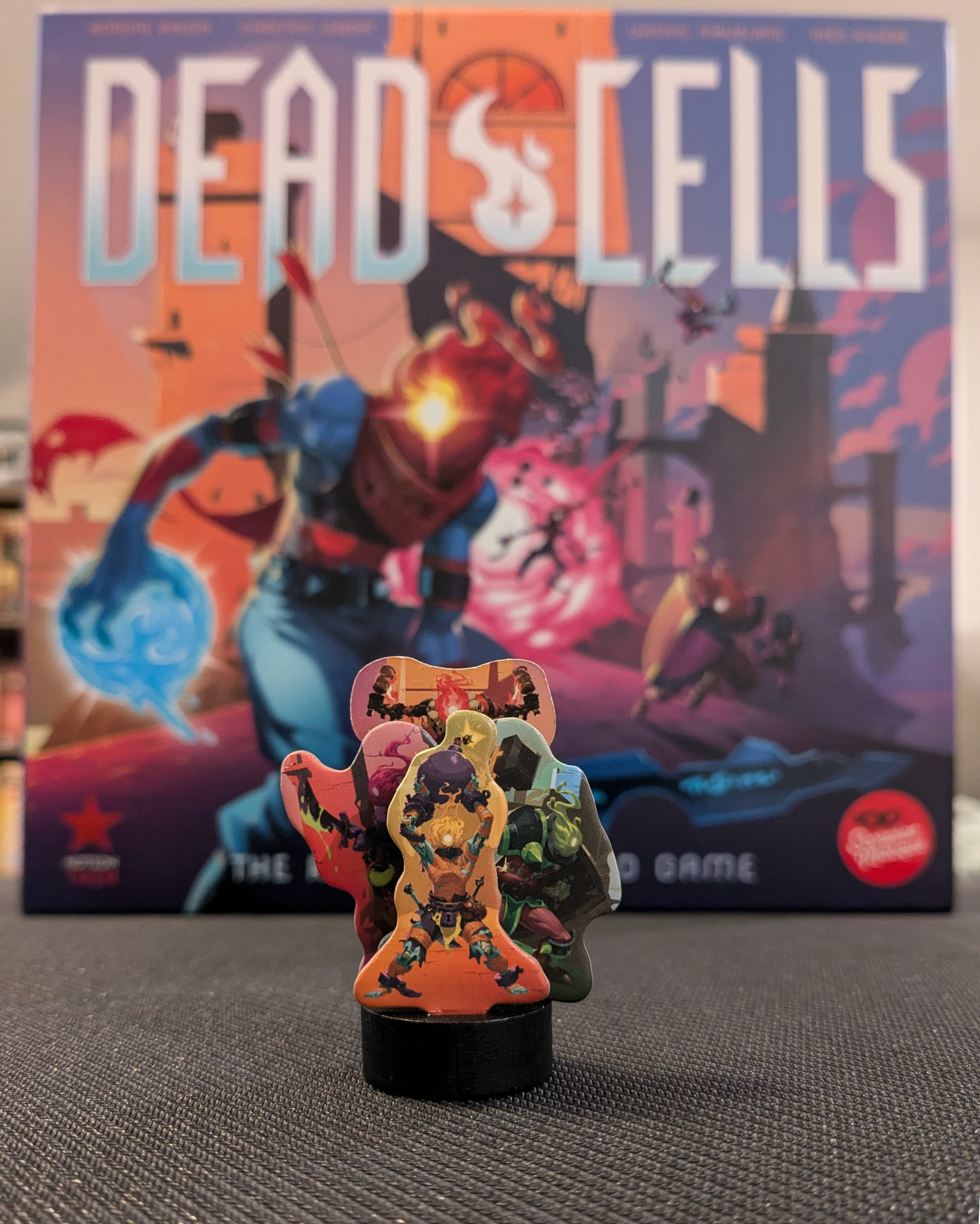
In this solo board game review, I will share my thoughts about Dead Cells: The Rogue-Lite Board Game after having completed the full campaign. This is a completely spoiler-free review. In total, it took 17 games to reach and beat the final boss which could very well have taken longer as I felt I rushed through it and also had some good luck to pull off the final win. Let’s get into the review!
Overview #
Dead Cells: The Rogue-Lite Board Game transforms the frantic, pixel-art rogue-lite video game into a strategic board game experience that feels both familiar and refreshingly new. At its core, the game is a deck-building, dungeon-crawling adventure where players control a Beheaded–a nameless, immortal protagonist–navigating through procedurally generated levels, battling monsters, collecting equipment, and attempting to survive increasingly challenging encounters.
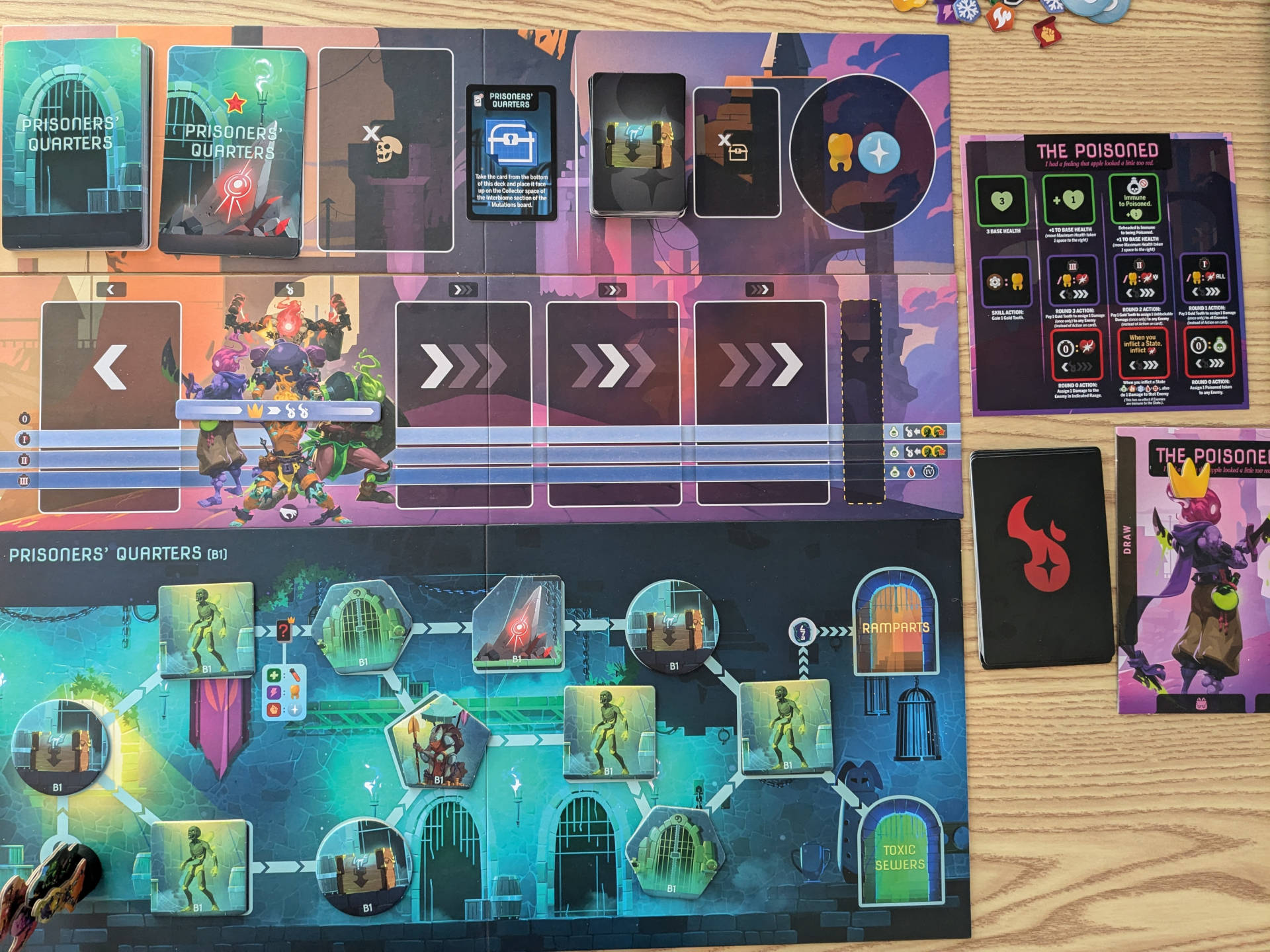
Players begin by selecting a character and a starting deck of cards that represent basic attacks and abilities. Each run through the dungeon is unique, with randomized tiles, enemies, and potential encounters. The game brilliantly mimics the video game’s progression system, allowing players to unlock new equipment, mutations, and abilities between runs that persist and enhance future attempts.
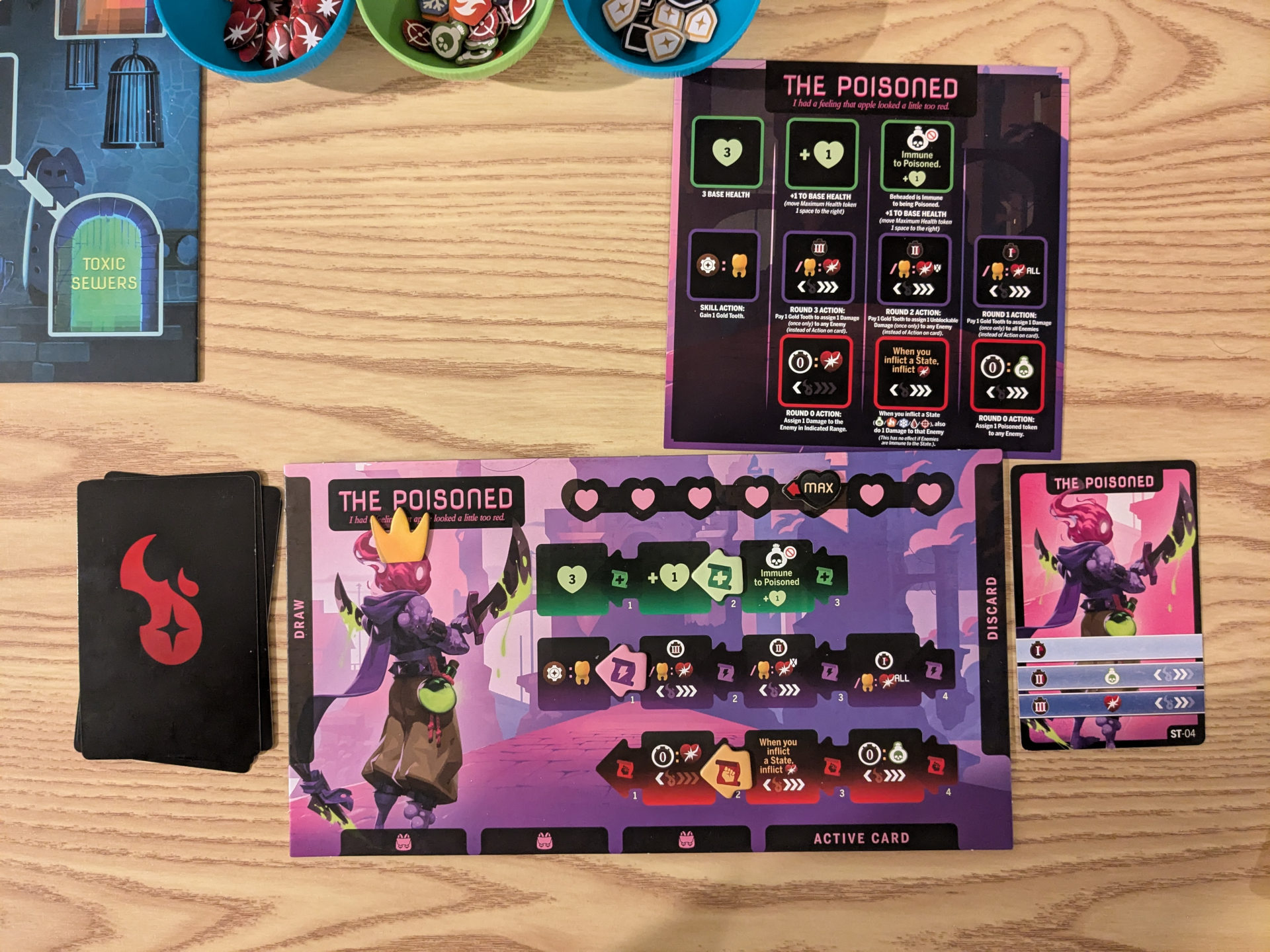
The core gameplay loop revolves around two aspects: choosing your path through the biomes and the combat encounters involving tactical card play. Combat involves choosing combat cards to play before the battle with imperfect information and then resolving your actions over multiple combat rounds. The most meaningful choices during combat being who to attack first and who takes the hits from the enemy’s retaliation. Players must balance offensive capabilities, defensive maneuvers, and resource management while exploring the biomes, fighting enemies, and ultimately trying to survive long enough to defeat a powerful boss at the end of your run. Beat the boss and you win. Fail and you lose. Either way, you’re going to want to play again and “git gud’er.” Pretty much every game, you’ll have gained enough cells to unlock something new.
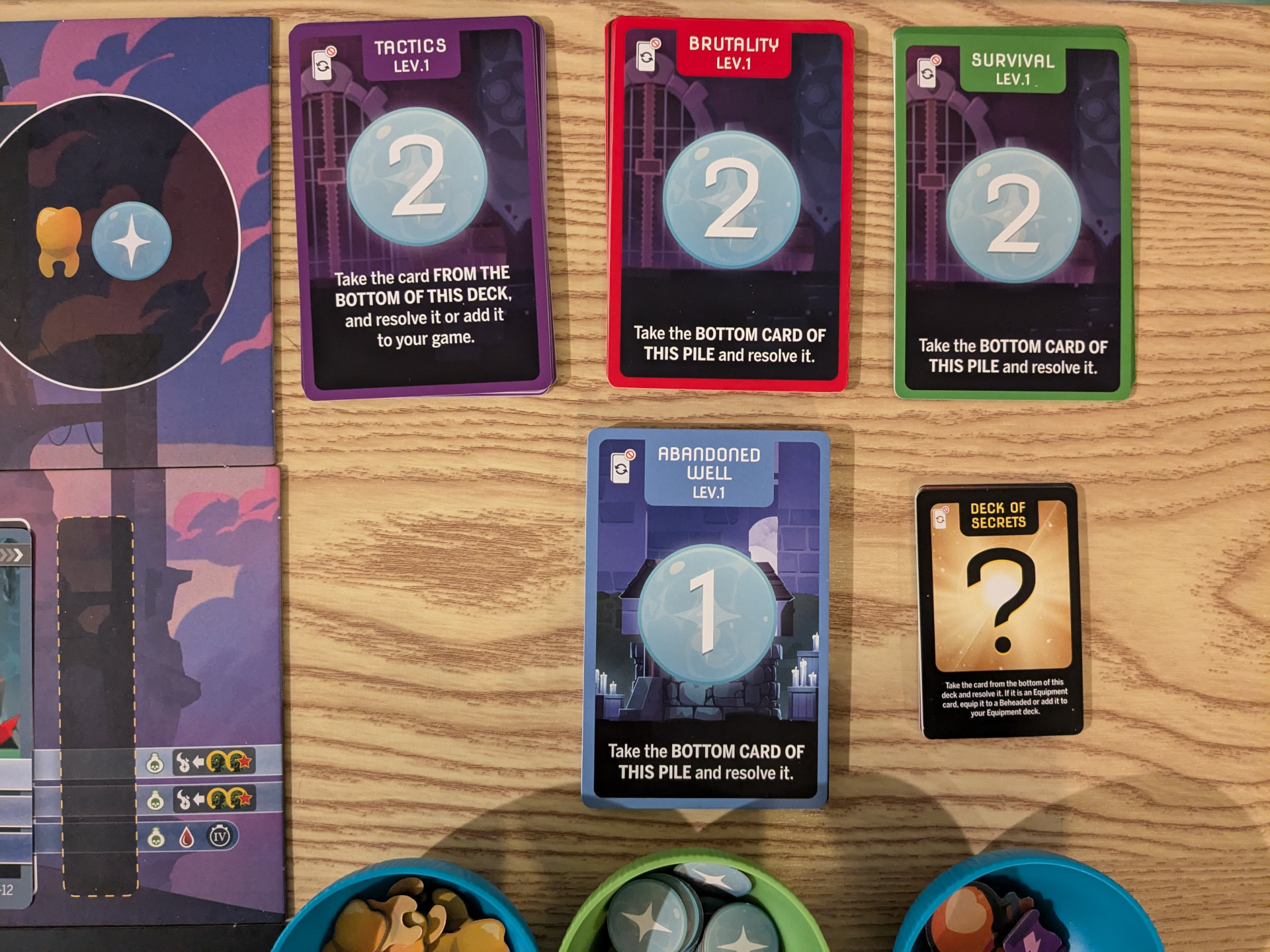
Gameplay #
Playing Dead Cells is like being trapped in the most addictive gameplay loop imaginable–and I mean that in the best possible way. Each run feels like a carefully crafted narrative of triumph and tragedy, where your decisions ripple through subsequent runs and shape your entire journey.
The game excels at capturing that quintessential rogue-lite feeling of progression and discovery. Unlike many campaign or legacy games that confront you with rule changes, Dead Cells offers a more organic learning experience. With each run, you’re not just playing–you’re studying. You learn boss patterns, understand enemy behaviors, and develop increasingly sophisticated strategies. You take these learnings and apply them in your next run. From the core strategic element of selecting your character and building your deck that defines a direction for your run to the choices you make to steer around the randomized elements that pop up along the way, information is a key resource as much as any progression upgrades you might acquire.
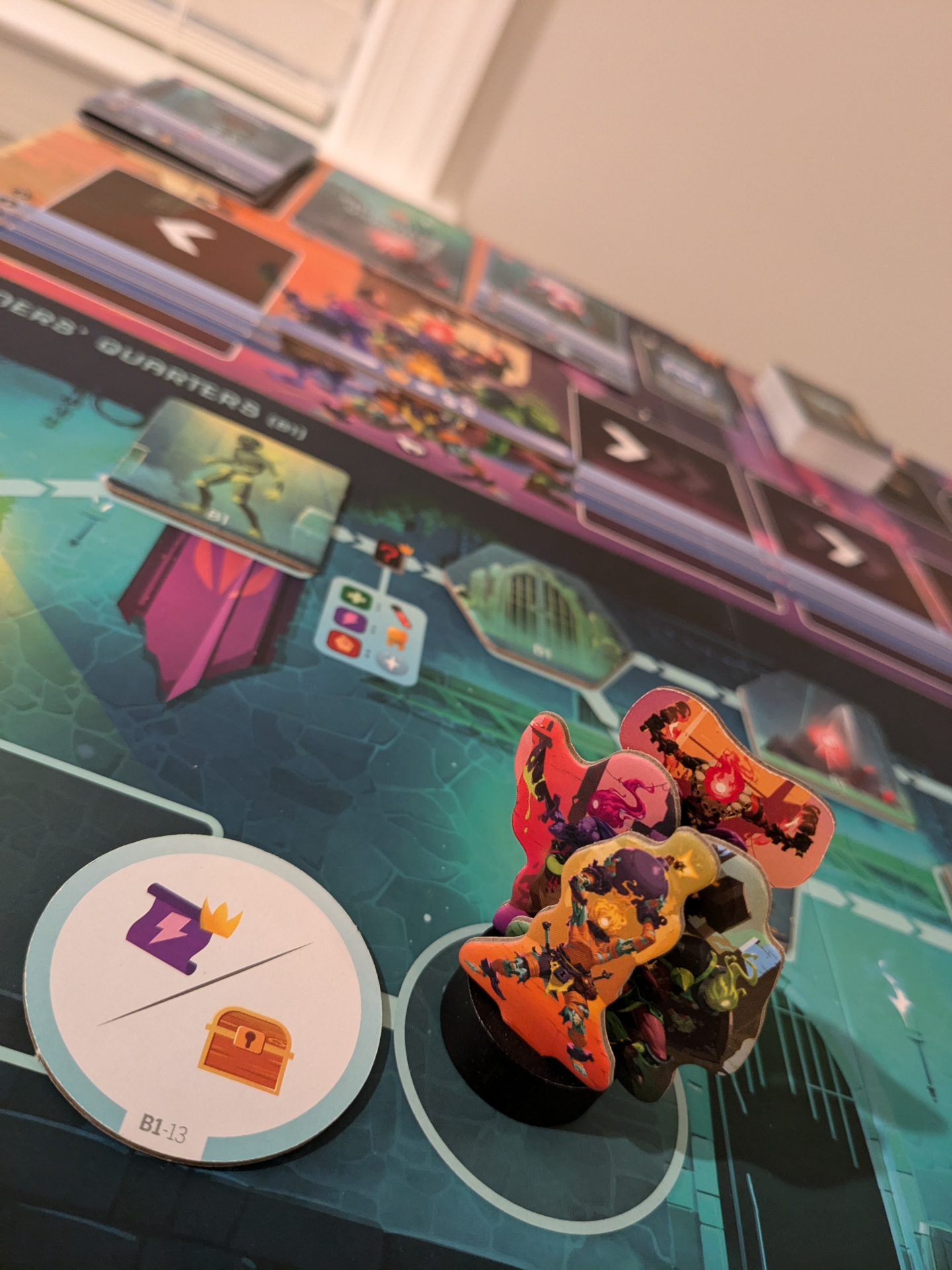
The randomization of the biome tiles and multiple paths ensures remarkable replayability. No two runs feel identical, which keeps the experience fresh and exciting. Sometimes, the RNG (random number generation) can feel as punishing as a hardcore video game–runs can end abruptly due to unfortunate card draws or enemy encounters. But that’s part of the game’s charm. Each failure isn’t a defeat; it’s a lesson.
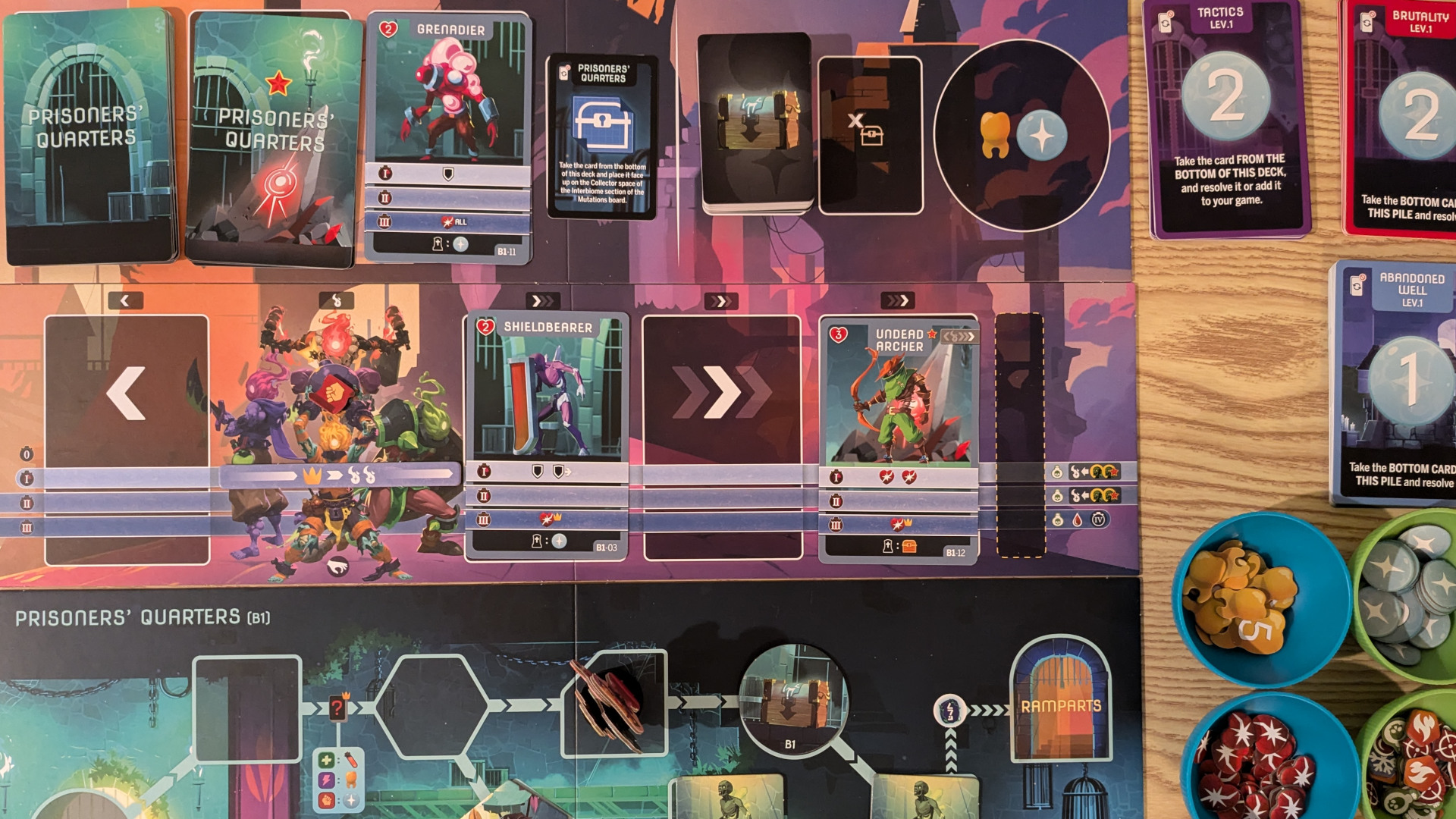
My first impression was that combat was fast and exciting, but that there was little agency. I would pick my combat cards and then just watch things play out. It took me a while to dig deeper and realize how even the little choices of who to attack first and who takes the hits on your team have a huge impact. Sure, when you get a lucky draw or an easy encounter you feel like a boss, but the meat of the game is in the encounters where the odds are stacked against you and you have to hunker down and make the most of it. You can’t loot everything and you’re going to take some hits. Your choices extend beyond immediate combat as your left over health and gained loot produce a ripple that affects the rest of your run.
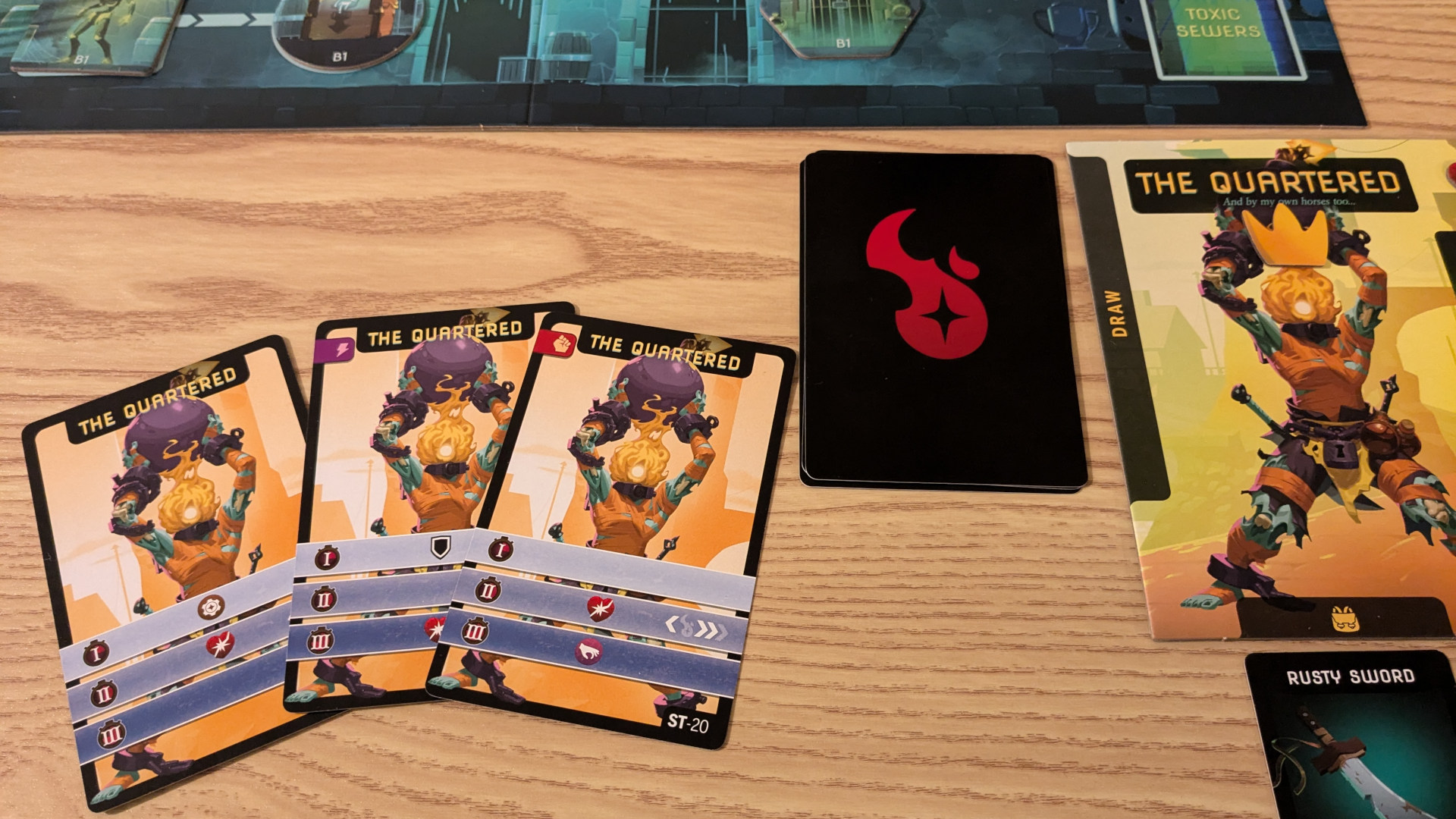
It’s in these strategic choices that you begin to see strong parallels in the board game and video game designs and I applaud the designers for this. I found myself reminded of the strategic choices I would make in the video game. Do I engage here? Which enemy do I dispatch first? Can I afford to take hits here for a better reward?
Then, there’s the boss combat. The boss combat is the most fun and interesting and serves as a perfect climax for your runs. Each boss introduces slightly new mechanics that makes their encounters feel special and unique. Much of your building and planning will revolve around how to best counter the boss’ patterns and strategy.
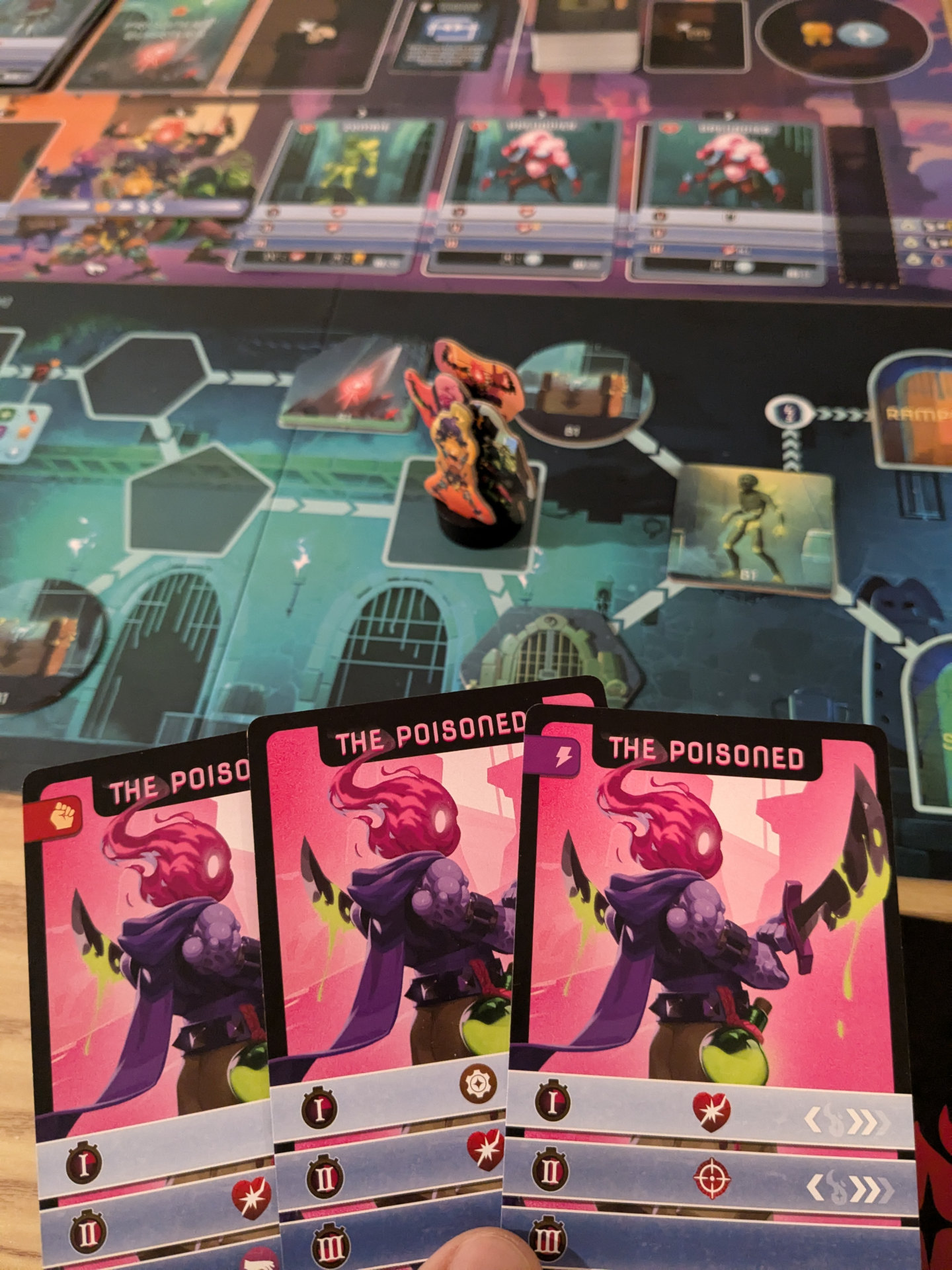
Unfortunately, there are a lot of friction points along the way due to rule edge cases that are not clearly defined. I found myself repeatedly consulting the rulebook and most important the online FAQ and errata that unfortunately is still incomplete at the time of this writing. However despite these glaring issues, the game is just too good and addictive. I had to just power through and use my best judgement. The game was still a blast and it’s really begging for a reprint to address all of the issues in this first printing.
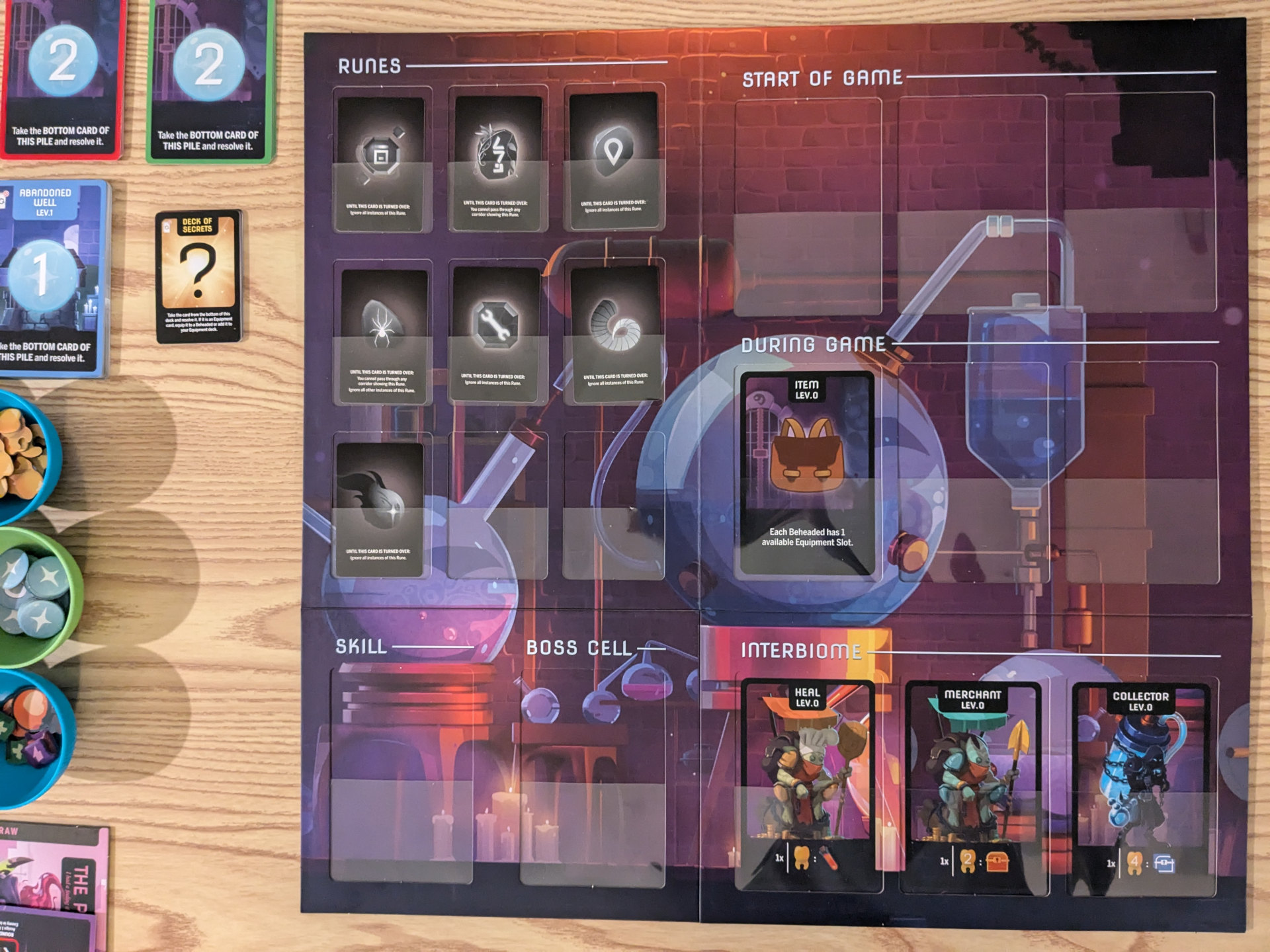
The progression system is a masterclass in game design. Unlocking new equipment, mutations, and abilities between runs creates an incredible sense of forward momentum. Even when a run ends in spectacular failure, you’re always excited about new weapon blueprints you unlocked during your run or what you might discover from spending your cells post-game. The unlocked content is interesting and leaves you wanting to play “just one more run.” It’s truly addictive. I played six games in my first sitting. I may have a problem.
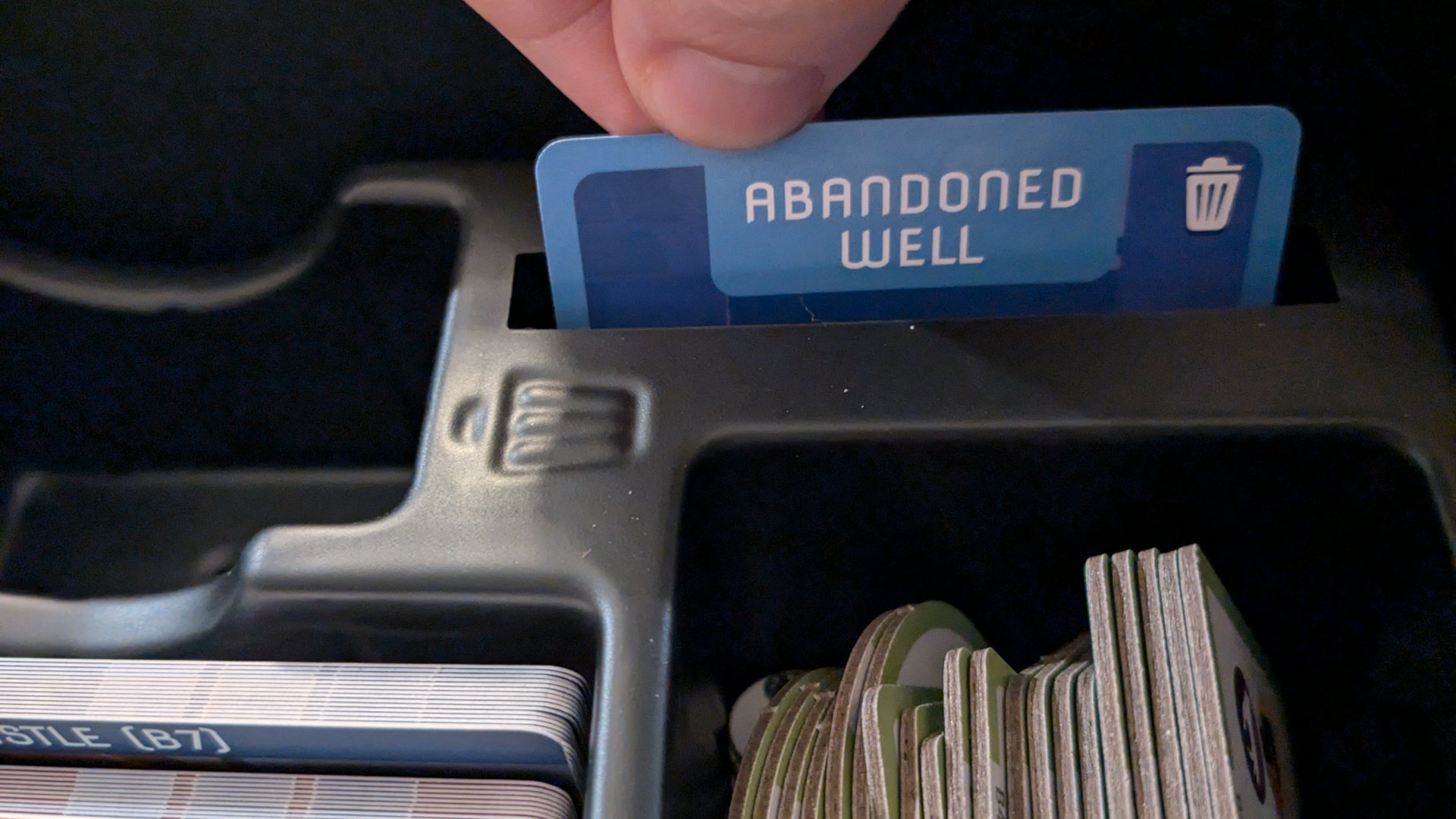
The game doesn’t have to end after you beat the final boss and I could see myself continuing to enjoy the game for a long time. You can always play one-off runs with everything that you’ve unlocked and you may want to do that just to experiment more with the different Beheaded characters or different builds. There’s also a “New Game+” of sorts to keep your unlocked progression and play through the game with added difficulty. Lastly, the game can also easily be fully reset to start all over. An interesting challenge might be to try to beat the game in the least number of runs.
Solo Play #
Dead Cells: The Rogue-Lite Board Game returns to its roots in the solo mode. Rather than multiple Beheaded teaming up to navigate the biomes, you are just a lone Beheaded joined by Serenade, a possessed flying sword automa that lends you a hand. Serenade acts much like another player as it contributes a random combat card to fights and can level up. It makes up for lack of combat card choices with powerful special abilities that activate depending on the top card of your discard pile so you have some control to strategize there.
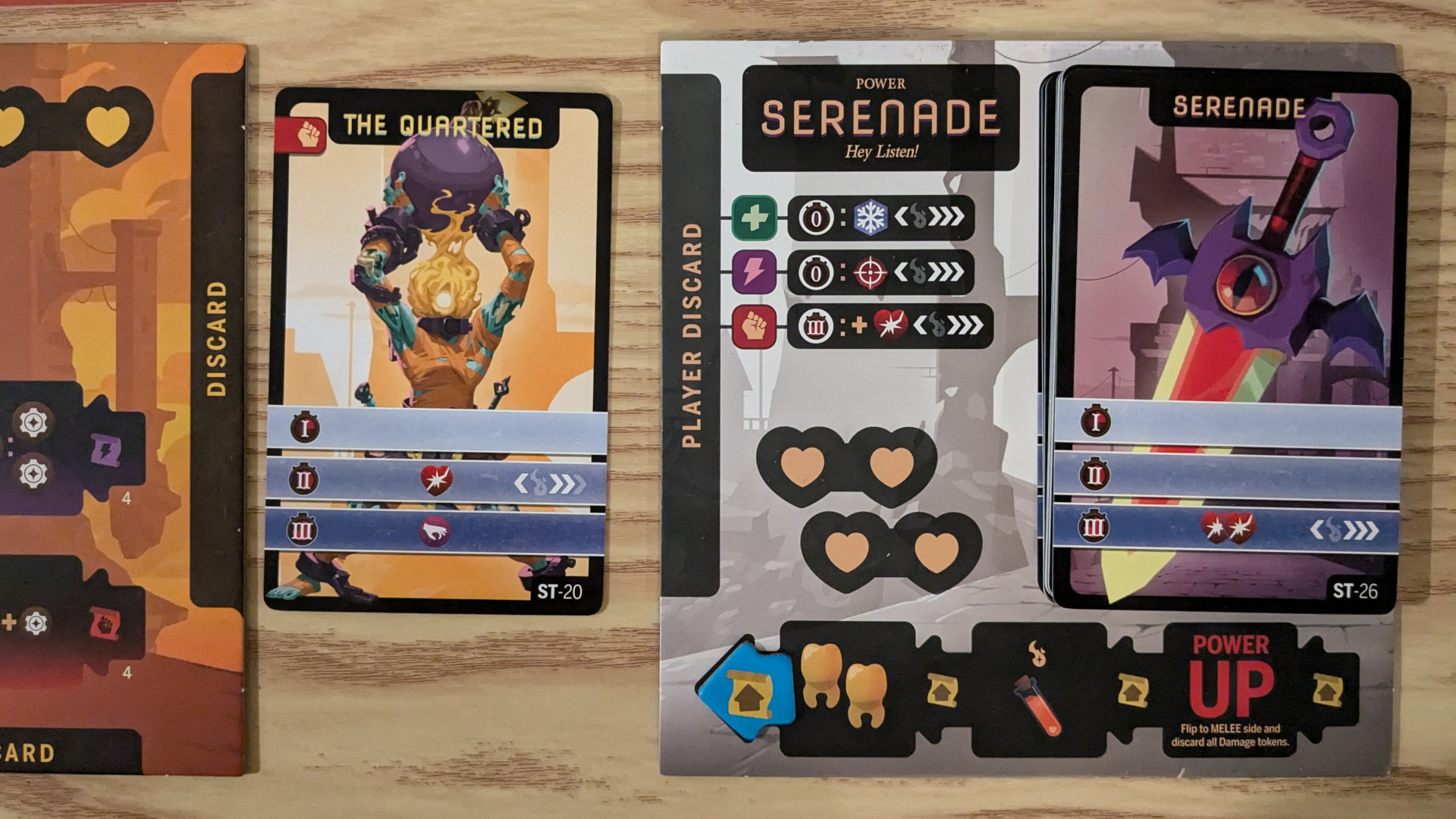
Initially, I was skeptical about the Serenade character, wondering if it might feel underpowered. For my first few games, I was envious of group players having more weapons in play or more deck-building options. After getting creamed a few times, I had to try two-handed. The two-handed method of play works well, but you do want to try to compartmentalize the two characters and try not to deliberate too much when choosing combat cards as to not give yourself an unfair advantage from utilizing what is meant to be hidden information.
My Serenade concerns were quickly dispelled though. I preferred the streamlined play that Serenade offers. As I kept playing I found that not only is Serenade entirely viable, but I even managed to defeat the final boss using this character, proving its strategic depth.
As mentioned before, the rules are plagued with a lack of clarity and Serenade falls victim to this from the start to end of the campaign. In particular there’s ambiguity about when Serenade should be considered a Beheaded and when it is not. If you find managing multiple hands comfortable, I recommend the two-handed approach from start to end to minimize issues you’ll encounter with the rules. While the team did a good job streamlining the solo experience, I found the constant rule ambiguities surrounding Serenade really pulled me out of the game.
Components and Design #
From a production standpoint, Dead Cells is a marvel of thoughtful design. The storage solution is intuitive, making setup and biome transitions seamless. Campaign instructions for unlocking and upgrading between games are smooth and user-friendly.
The components reflect a clear love and respect for the source material. The multi-part standee is a particular highlight, adding a tactile dimension to the gameplay. While the board game can’t perfectly replicate the video game’s lightning-fast combat, it captures the essence–the risk/reward decision-making, the strategic dispatching of enemies, and the pure joy of progressive discovery.
The artwork maintains the distinctive Dead Cells aesthetic, feeling both faithful to the original and beautifully adapted for the tabletop medium. There’s a palpable attention to detail that suggests the designers truly understood what made the video game special.
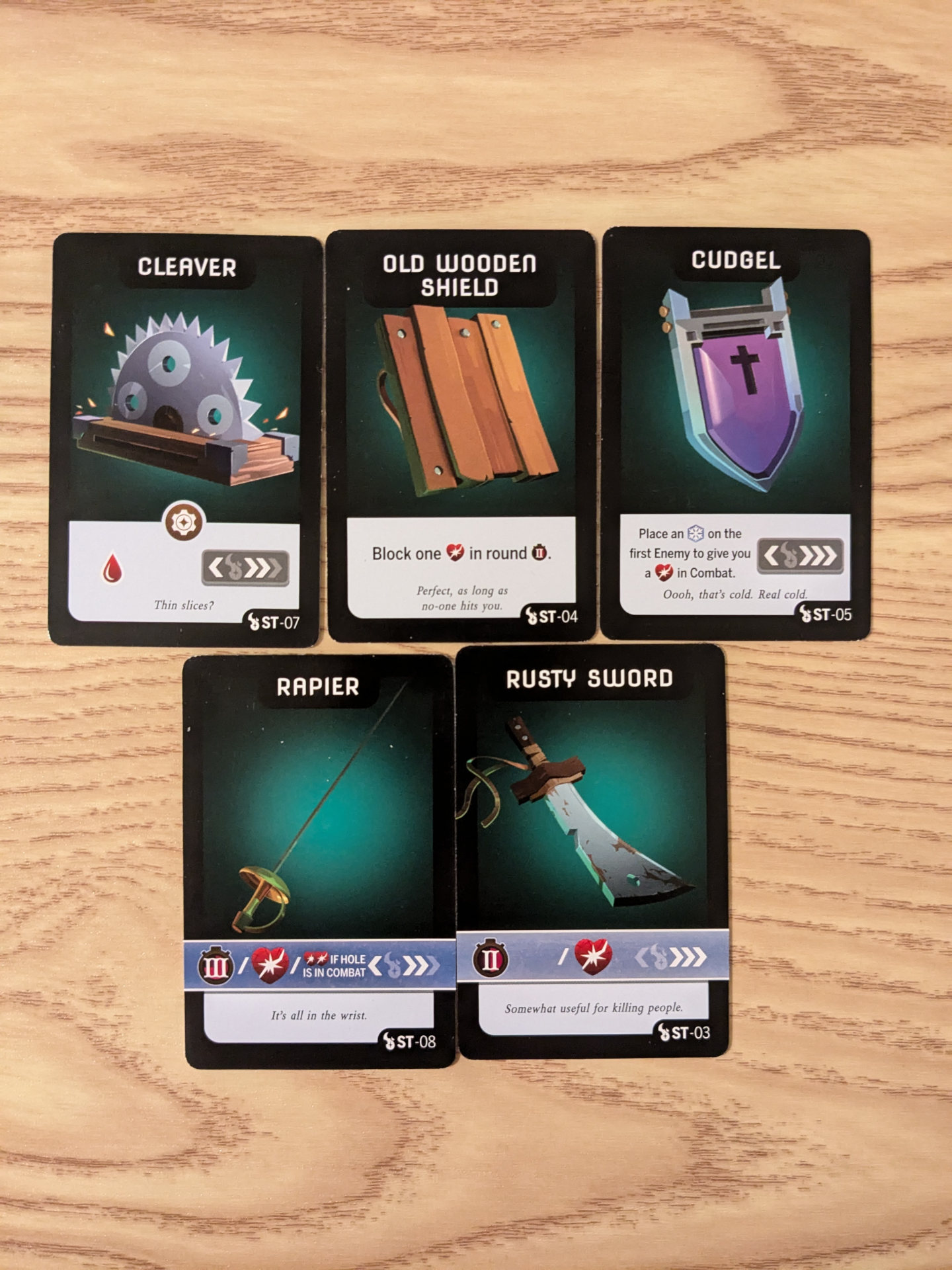
The game is VERY light on narrative which I see as a benefit of this campaign game. It makes it especially perfect for players that like to play solo and in a group. It’s very easy for players to drop in and out between sessions. If your friends missed a game, they’re not missing much. You can share what you might have unlocked without them or they can just discover what’s new (typically weapons, mutations or combat cards) as you play.
Final Thoughts #
Dead Cells: The Rogue-Lite Board Game is more than just a adaptation–it’s a love letter to rogue-lite gaming. It successfully translates the digital experience into a deeply strategic, endlessly replayable tabletop adventure. For fans of the video game and board game enthusiasts alike, this is a must-have that promises many hours of engaging gameplay. The game has a large number of edge cases and rule ambiguities that still need to be addressed, but that surprisingly doesn’t detract from the overall enjoyment. I could easily give this game a 10/10 with a new reprint that addresses the rule issues.
Dead Cells: The Rogue-Lite Board Game offers a unique, thrilling journey that will keep you coming back, run after run, death after glorious death.
We purchased this product independently. All opinions expressed are independent, honest, and unbiased.
- Incredible replayability due to randomized biome tiles, procedural generation, and a robust progression system that makes every run feel unique and exciting
- Masterful translation of the video game's essence of risk/reward decision-making and progressive discovery
- Excellent rogue-lite meta-progression experience. One of the few games to offer this in the market.
- Addictive gameplay loop that makes you want to play "just one more run," with meaningful strategic choices in both combat and path selection
- Significant rules ambiguity and edge cases that require frequent rulebook and online FAQ consultations
- Randomness can feel punishing, with runs potentially ending abruptly due to unfortunate card draws or enemy encounters
Learn more about how we rate board games...
